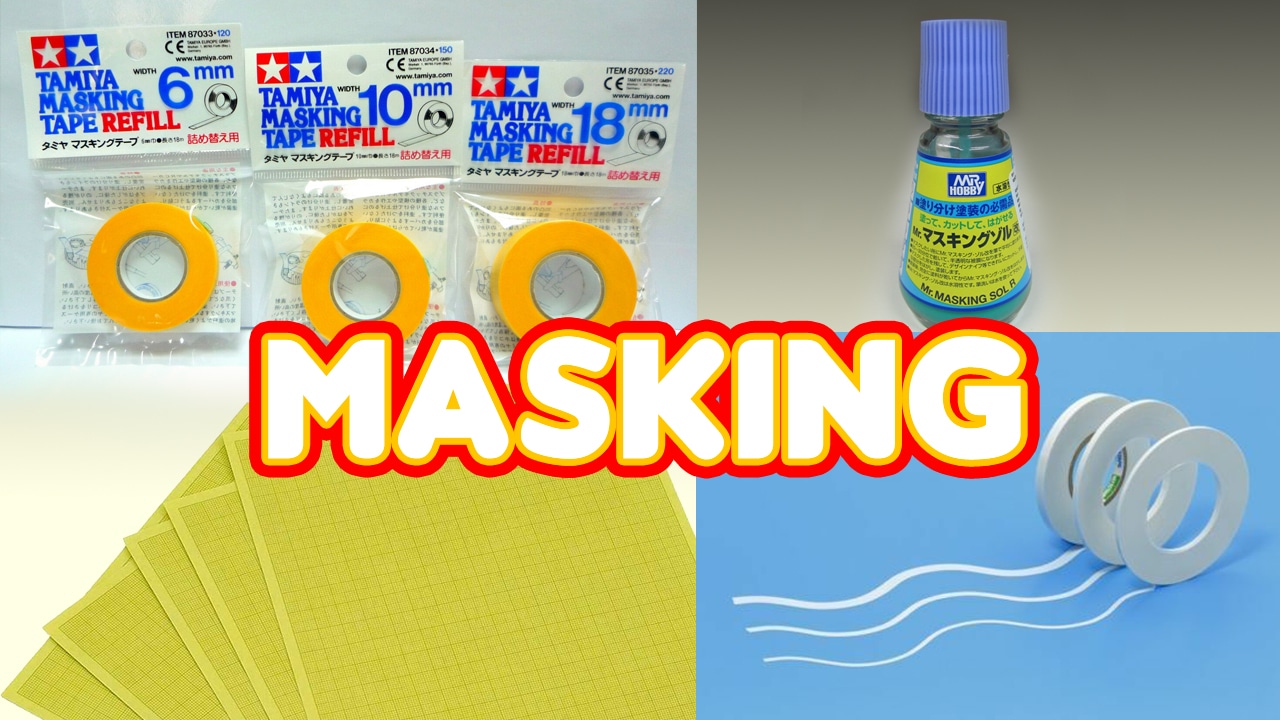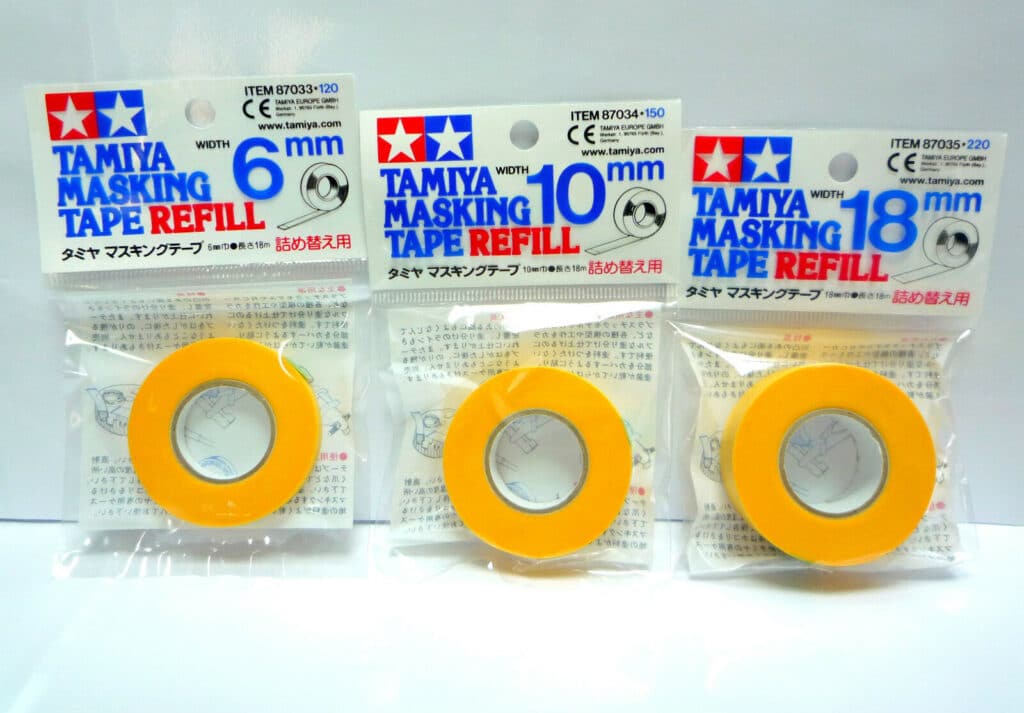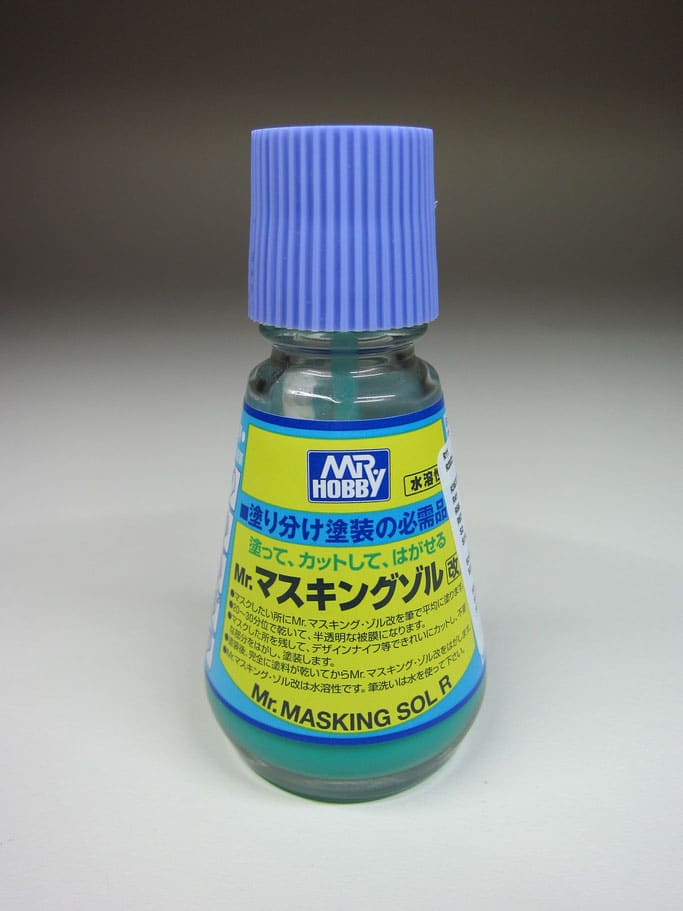Masking Plastic Models
INTRODUCTION
Masking plastic models – a tiresome topic for anyone who has decided to airbrush. You quickly get to the point where components have to be painted which have areas that should not be painted at the same time (glued areas, cockpit windows, air inlets, landing gear shafts, etc.). Here we have to mask (glue, cover, etc.) to protect the areas from the paint mist. This is sometimes not that easy and requires a lot of time, patience, and, not infrequently, creativity. It is often the masking that ultimately decides whether a paint job is successful or not. Anyone who works sloppily here has already lost.
Masking painted surfaces are also not entirely harmless (peeling off the paint when removing) and requires thorough preparation before painting. Therefore it is absolutely important to clean the model with alcohol before painting it for the first time. This removes the last bits of dust from grinding and adhering sweat deposits from the fingers. I do this with great care and until now, with the peeling off of the masking, I have never peeled off the bottom color. In general, I try to keep masking to a minimum by building with foresight (that saves time and money). Anyone who has to mask an entire model to paint an antenna has done something wrong in every respect (poor construction planning, poor handling of the airbrush).
DUCT TAPE
In general, I would advise against using adhesive tape (masking tape) from the hardware store/supermarket. Often the adhesive force is very strong and the lower color is very likely to peel off. Here you are better advised to use a special model-making adhesive tape (masking tape). Tamiya tape is highly recommended. It is not too weak that it comes off by itself and not so strong that the paint sticks to it. Even if it has been left on the model for a long time, it does not leave any adhesive residue, which is not insignificant. Unfortunately, it’s not exactly cheap.
The curve tape from Tamiya is also recommended and very practical. It makes masking curves very easy. It has proven to be very valuable to me, especially with the cockpit windows, aircraft noises, and thrust nozzle area. Here, too, the price is not exactly low.
Tamiya also offers interesting products for creating templates. This allows you to paint larger decals yourself (national badges etc.), which of course look much higher quality as a result. The original decal is cut out precisely and transferred to the self-adhesive stencil sheet with a pencil. Then cut out the line drawn with a scalpel and glue the template onto the model.
Which Airbrush kit with compressor?
Airbrush Techniques – Scale Modelling Tips
LIQUID MASKING AGENT
Liquid masking tape is a very useful tool. It consists of a liquid that hardens to a kind of foil relatively quickly after being applied with a brush (always apply two layers in order to obtain a certain foil thickness). After successfully painting it, it can be removed from the component without leaving any residue. I like to use it when masking cockpit windows to save tape and time. A liquid masking agent is also very useful for creating paint flakes on models. Here, a liquid masking agent is simply sprayed onto the paintwork and then painted over. Then it is rubbed off again and the underlying paint comes to light.
ALTERNATIVE MASKING AGENTS
Sometimes there are places on the model where it is difficult to get ahead with classic masking agents (air inlets, thrusters, etc.). Anyone who has ever tried to close around an air inlet flush with adhesive tape knows what I’m talking about. Alternative aids are available here. For air inlets and other openings, foam rubber or foamed plastic (from packaging material) has proven to be very useful. These materials can be easily cut with scissors, are very flexible, and can easily be removed again with tweezers.
With thrusters, I just roll up some paper and put it in the opening. The tension in the paper is sufficient to seal the edges. Paper is also very helpful when painting large areas. It can be easily clamped under the edge of the adhesive tape and can thus cover large parts of the model. That saves time and tape.






